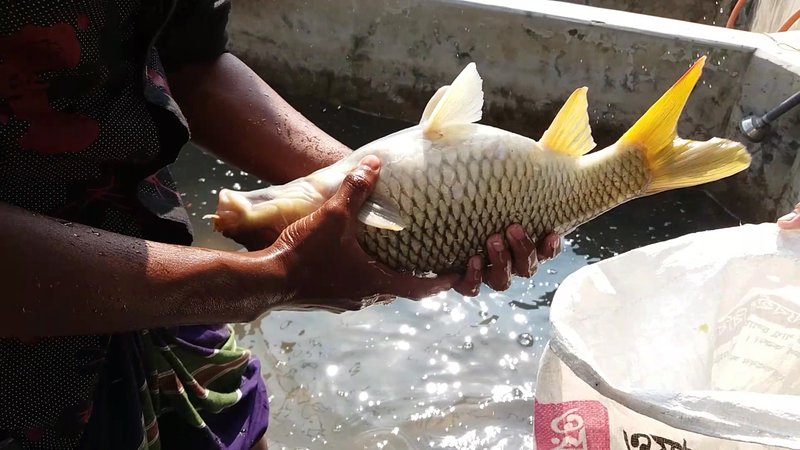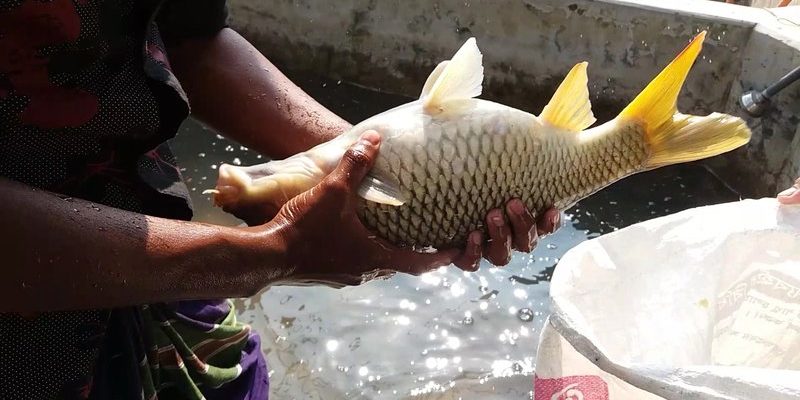
Think of breeding carp as planting a garden. You need to prepare the soil (or in this case, the water), choose the right seeds (or fish), and then care for them as they grow. With the right knowledge and a little patience, you can cultivate a flourishing environment that supports healthy carp. Let’s dive into the world of carp breeding and explore the essential techniques and valuable tips that will make this journey enjoyable and rewarding.
Understanding Carp Breeding Basics
Before you can start breeding carp, it’s crucial to understand some basic concepts. Carp, a hardy freshwater fish, are known for their adaptability and resilience. They can be found in various environments, but creating a suitable habitat for breeding is key. Generally, carp prefer shallow waters with plenty of vegetation. This not only provides shelter but also offers a place for them to lay eggs.
Breeding often happens in spring when water temperatures rise between 64°F and 75°F (18°C to 24°C). During this time, male and female carp will start displaying courtship behaviors, which is a sight to see! You might notice males nudging females, which prompts them to release eggs. Being attentive to these signs helps you know when to provide the best conditions for breeding.
Additionally, the ideal spawning site should have calm waters with plenty of aquatic plants. These plants are essential as they provide a safe place for fertilized eggs to stick and develop. Carp can lay thousands of eggs at once, so an adequate environment is crucial for ensuring many of them survive to adulthood.
Preparing the Breeding Environment
Creating the right environment for carp breeding is like setting the stage for a grand performance. You want everything in place so the fish can thrive and multiply. Start by ensuring the water quality is optimal. This includes checking the temperature, pH levels, and ammonia content. Ideally, your water should have a pH of around 7.0 to 8.0, which is perfect for carp.
Filtration systems and regular water testing can help maintain good water quality. Change about 10%-15% of the water weekly to keep things fresh. You might also want to introduce aeration to keep oxygen levels high, especially if you’re breeding in a smaller pond or tank.
Another important aspect is providing plenty of vegetation. Aquatic plants not only serve as spawning substrates but also improve water quality by absorbing excess nutrients. A mix of floating plants and submerged varieties will create a beautiful and functional habitat for both adult carp and their offspring.
Selecting the Right Carp Species
When it comes to breeding carp, not all species are created equal. The most commonly bred carp is the common carp (Cyprinus carpio) due to its hardiness and adaptability. Other popular choices include the mirror carp, known for their unique scale patterns, and the koi carp, often bred for decorative purposes in ornamental ponds.
You might be wondering which type is best for your specific goals. If you’re looking for robust fish that can thrive in various conditions, the common carp is a solid choice. On the other hand, if you’re interested in aesthetics and colorful designs, koi might be more your style. Mirror carp can be great for both recreational fishing and adding visual variety to your pond.
When selecting your breeding stock, look for healthy, disease-free fish. They should have bright colors, clear eyes, and vigorous behavior. It’s also wise to choose a mix of sizes and ages to encourage genetic diversity in your breeding program.
Breeding Processes: What to Expect
The actual breeding process can be both fascinating and a bit chaotic, much like a bustling party. Once the water temperature rises and your carp have settled in, the males will begin to court the females. As the males become more aggressive in their nudging, you’ll know it’s time for breeding.
The female carp will release her eggs into the water, usually onto plants or other submerged surfaces. Males quickly follow to fertilize them. This can happen several times over a short period, leading to thousands of eggs being released. Don’t be alarmed—this is all part of the natural cycle!
After spawning, the eggs will take about 3 to 10 days to hatch, depending on environmental conditions. During this time, it’s important to limit disturbances to allow the eggs to develop without stress. Once they hatch, the tiny carp fry will initially rely on their yolk sacs for nutrition before needing to eat small foods like newly hatched brine shrimp or finely crushed fish food.
Feeding Carp Fry for Healthy Growth
Feeding carp fry is crucial for their growth and survival. You might think of it like nurturing a baby—it requires attention and care. Once they hatch, newborn carp are tiny and vulnerable, so starting them off right is essential. During the first few weeks, they need a diet rich in protein to help them grow strong and healthy.
You can start with high-quality fry food that’s specially formulated for small fish. These feeds contain the right mix of nutrients to support their rapid growth. You may also consider supplementing with live foods like infusoria or brine shrimp, which are excellent sources of protein and help stimulate the fry’s appetite.
As they grow, you can gradually introduce larger food options. Always monitor their feeding behavior—if they’re eagerly eating, that’s a great sign! Remember, overfeeding can lead to poor water quality, so be sure to feed small amounts several times a day rather than one large meal.
Common Issues in Carp Breeding
Like any adventure, breeding carp can come with its own set of challenges. One major issue you might encounter is poor water quality, which can lead to health problems or even fatalities among your fish. Regular testing and maintenance can help prevent this. If you notice symptoms like lethargy or unusual swimming behavior, it’s a red flag that something is off.
Another concern is predation. If you’re breeding in a pond, other creatures like birds or larger fish might pose a threat to your young carp. To mitigate this, consider using nets or providing hiding spots in the form of plants and rocks.
Lastly, disease outbreaks can sometimes occur. It’s vital to keep an eye out for any changes in behavior or appearance. If you suspect disease, consider isolating affected fish and consulting a specialist for treatment options.
Breeding carp is more than just a hobby; it’s a rewarding experience that connects you to nature. With the right techniques and a little patience, you can cultivate a thriving environment for these fascinating fish. Remember, it’s all about creating the best possible conditions—from water quality to feeding practices—so your carp can flourish.
As you embark on this journey, stay curious and open to learning as you go. Each step you take, whether it’s preparing the breeding environment, selecting the right species, or dealing with challenges, will enhance your understanding and appreciation of the carp breeding process. So, grab a cup of coffee, settle into the adventure, and watch your aquatic friends grow!

